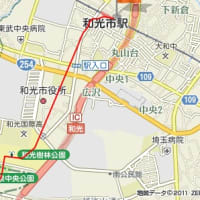Akinobu Suzuki, Takuya Mukawa, Akinori Tsukagoshi, Paul W. Frankland, Satoshi Kida.
Learn. Mem. 15, 426-433 (2008) | doi:10.1101/lm.888808
Previous studies have shown that inhibiting protein synthesis shortly after reactivation impairs the subsequent expression of a previously consolidated fear memory. This has suggested that reactivation returns a memory to a labile state and that protein synthesis is required for the subsequent restabilization of memory. While the molecular mechanisms underlying the restabilization of reactivated memories are being uncovered, those underlying the initial destabilization are not known at all. Using a contextual fear conditioning paradigm in mice, here we show that LVGCCs or CB1 receptors in hippocampus are required for the initial destabilization of reactivated memory. Either pharmacological blockade of hippocampal protein synthesis or genetic disruption of CREB-dependent transcription disrupts memory restabilization following reactivation. However, these effects were completely blocked when mice were treated with inhibitors of either LVGCCs or CB1 receptors, indicating that LVGCCs or CB1 receptors are required for the initial destabilization of reactivated memory. In control experiments, we show that blockade of LVGCCs or CB1 receptors does not interfere with the ability of ANI to block protein synthesis, or with the ability of ANI to impair initial consolidation. These experiments begin to reveal mechanisms underlying the destabilization of previously consolidated memories following reactivation and indicate the importance of activation of LVGCCs and CB1 in this process.# 恐怖記憶の書換か…本人にとってはつらいだろうな…

# なんでもいいけど、東京新聞の科学記事って他者に比べて秀逸だな

Jessica A. Belser, Ola Blixt, Li-Mei Chen, Claudia Pappas, Taronna R. Maines, Neal Van Hoeven, Ruben Donis, Julia Busch, Ryan McBride, James C. Paulson, Jacqueline M. Katz, Terrence M. Tumpey.
PNAS 105 7558-7563 (2008) | doi:10.1073/pnas.0801259105
Avian H7 influenza viruses from both the Eurasian and North American lineage have caused outbreaks in poultry since 2002, with confirmed human infection occurring during outbreaks in The Netherlands, British Columbia, and the United Kingdom. The majority of H7 infections have resulted in self-limiting conjunctivitis, whereas probable human-to-human transmission has been rare. Here, we used glycan microarray technology to determine the receptor-binding preference of Eurasian and North American lineage H7 influenza viruses and their transmissibility in the ferret model. We found that highly pathogenic H7N7 viruses from The Netherlands in 2003 maintained the classic avian-binding preference for α2–3-linked sialic acids (SA) and are not readily transmissible in ferrets, as observed previously for highly pathogenic H5N1 viruses. However, H7N3 viruses isolated from Canada in 2004 and H7N2 viruses from the northeastern United States isolated in 2002–2003 possessed an HA with increased affinity toward α2–6-linked SA, the linkage type found prominently on human tracheal epithelial cells. We identified a low pathogenic H7N2 virus isolated from a man in New York in 2003, A/NY/107/03, which replicated efficiently in the upper respiratory tract of ferrets and was capable of transmission in this species by direct contact. These results indicate that H7 influenza viruses from the North American lineage have acquired sialic acid-binding properties that more closely resemble those of human influenza viruses and have the potential to spread to naïve animals.# 脅威がH5N1型に限ったことではないという警鐘…

Hitoshi Iino, Hisashi Naitow, Yuki Nakamura, Noriko Nakagawa, Yoshihiro Agari, Mayumi Kanagawa, Akio Ebihara, Akeo Shinkai, Mitsuaki Sugahara, Masashi Miyano, Nobuo Kamiya, Shigeyuki Yokoyama, Ken Hirotsu, Seiki Kuramitsu.
Acta Crystallographica Section F: Structural Biology and Crystallization Communications 64, 487-491 (2008) | doi:10.1107/S1744309108013572
It was essential for the structural genomics of Thermus thermophilus HB8 to efficiently crystallize a number of proteins. To this end, three conventional robots, an HTS-80 (sitting-drop vapour diffusion), a Crystal Finder (hanging-drop vapour diffusion) and a TERA (modified microbatch) robot, were subjected to a crystallization condition screening test involving 18 proteins from T. thermophilus HB8. In addition, a TOPAZ (microfluidic free-interface diffusion) designed specifically for initial screening was also briefly examined. The number of diffraction-quality crystals and the time of appearance of crystals increased in the order HTS-80, Crystal Finder, TERA. With the HTS-80 and Crystal Finder, the time of appearance was short and the rate of salt crystallization was low. With the TERA, the number of diffraction-quality crystals was high, while the time of appearance was long and the rate of salt crystallization was relatively high. For the protein samples exhibiting low crystallization success rates, there were few crystallization conditions that were common to the robots used. In some cases, the success rate depended greatly on the robot used. The TOPAZ showed the shortest time of appearance and the highest success rate, although the crystals obtained were too small for diffraction studies. These results showed that the combined use of different robots significantly increases the chance of obtaining crystals, especially for proteins exhibiting low crystallization success rates. The structures of 360 of 944 purified proteins have been successfully determined through the combined use of an HTS-80 and a TERA.# 凄い成果なんですよ…けど、こんなに大変な仕事なのに…

# あかん…プレスリリースにも何にも行き当たらん…

Kevin Robert Gurney, Yu-Han Chen, Takashi Maki, S. Randy Kawa, Arlyn Andrews, Zhengxin Zhu.
JOURNAL OF GEOPHYSICAL RESEARCH 110, D10308 (2005) | doi:10.1029/2004JD005373
Estimates of fossil fuel CO2 are a critical component in atmospheric CO2 inversions. Rather than solving for this portion of the atmospheric CO2 budget, inversions typically include estimates of fossil fuel CO2 as a known quantity. However, this assumption may not be appropriate, particularly as inversions continue to solve for fluxes at reduced space and timescales. In this study, two different alterations are made to widely used fossil fuel CO2 emissions estimates, and these altered emissions are run through a series of atmospheric inversion experiments. The first alteration is the inclusion of a seasonal cycle which depends upon both season and latitude. The other alteration is the inclusion of year-by-year changes in the spatial distribution of fossil fuel CO2 emissions. All but the interannual inversion experiments are run with three models from the TransCom 3 atmospheric inversion intercomparison. These three models span the key components of atmospheric transport and hence can be expected to capture the range of potential bias caused by assumed fossil fuel CO2 emission estimates when interacting with transport processes. Key findings include the lack of seasonal rectification of the seasonally varying fossil fuel CO2 emissions in the annual mean. Examination of monthly fluxes in the seasonal inversion, however, indicates that significant bias is likely occurring and may be as large as 50% of the residual flux during certain times of the year. In this study, interannual variations were little effected by shifts in the spatial pattern of fossil fuel CO2 emissions. However, as the spatial scale of inversions is reduced, potential bias will likely increase.# 東西半分でこんなに違うのか…




















